Step-by-step guide to growing onions from seeds in one season without the hassle
Turnip onions are grown not only from sets, but also from seed seedlings or direct sowing into the ground. This is not the most popular method among gardeners, as it does not always bring the expected result. If you choose the right varieties and follow the rules of agricultural technology, a rich harvest will be ensured.
The content of the article
Growing onions from seeds in one season
Grow onions in an annual culture - a very real task if you have the time and basic skills of agrotechnical work. A prerequisite for obtaining high-quality products is a dry warm autumn... Only ripe and dry heads will be stored until the end of winter.
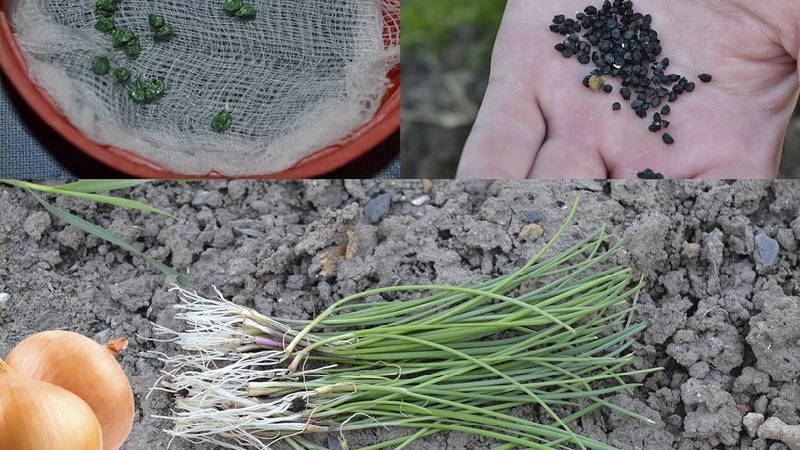
What varieties are suitable
Not all are suitable for seed growing varieties... When choosing them are guided by such indicators:
- Ripening period is an advantage in early maturing, the growing season of which lasts 90-100 days.
- Recommended zoning.
- Keeping quality, if harvesting for the winter is supposed.
- Size: small specimens are considered to be up to 50 g, medium - from 120 g, large - up to 400 g and above. The latter are stored longer.
- Small-buds give 1-2 bulbs, multi-buds form a nest of several heads and a lot of green mass.
The most popular varieties of Russian and foreign selection:
- Exibition - Dutch medium late, large bulbs, 500-600 g each. Due to their juicy sweetish taste, vegetables are ideal for adding to salads. The harvest is stored for 3-4 months. The culture is resistant to most diseases, adapts to the weather conditions of any region.
- Red Baron - gives bright purple heads weighing up to 120 g. The taste is semi-sharp, sweetish. The plant is resistant to pathogens. Suitable for the Central, Volgo-Vyatka, Central Black Earth, North Caucasian and Ural regions.
- Siberian annual - early maturing universal variety, as it is grown for turnip and feathers, two- and four-bud. It tolerates the cold climate of the Urals and Siberia and is suitable for storage. The average weight of the bulbs is 40–50 g. Vegetables do not shoot.
- Shaman - produces early ripening oblong bulbs of 50–90 g. Suitable for compact plantings, withstands drought. Vegetables are white with a reddish tinge, they are not stored for long.
- Centaur - mid-season variety. Dense heads weighing 60–90 g, semi-sharp, suitable for storage. The plant is unpretentious, resistant to diseases, suitable for the Volga-Vyatka and North Caucasian regions.
- Farmer - early variety for universal use. Zoned for the Central region, undemanding in care. The bulbs are pungent in taste, the average weight is 80-110 g. The crop is stored until spring.
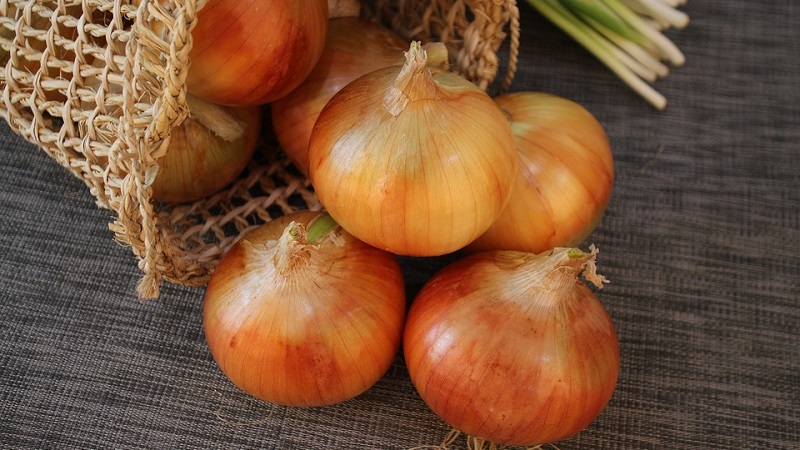
Hybrids
Seeds of hybrids are more expensive, but the price is justified by high yields and minimal labor costs. Most popular plants:
- Albion F1 - gives white weakly sharp bulbs weighing 70-100 g. Mid-season, tolerates short frosts and drought, the harvest is stored until winter.
- Daytona F1 - mid-season and drought-resistant hybrid, suitable for storage. It is not exposed to pink rot and fusarium. Round turnips, weighing 50-100 g, give a lot of greenery.
- Copra F1 - a highly productive early hybrid, the harvest is stored until the next season. The average weight of the bulbs is 30–40 g, the taste is semi-sharp.The culture is recommended for cultivation in the Central Black Earth and Far Eastern regions.
- Sangro F1 - late ripening high-yielding (274-300 kg / ha) hybrid. Disease and drought resistant. The bulbs weigh 60–150 g, and a large green mass is growing.
Seed preparation and germination
Growing onions in seedlings will allow you to get an early harvest... Before sowing, the seeds are checked for germination. To do this, 15–20 pieces are wrapped in a damp cloth for 12 days, placed in a warm place and periodically moistened. If there are few seedlings, they sow thickly.
Raw materials not etched by the manufacturer are disinfected 1% solution of potassium permanganate for 30 minutes. Then washed and soaked overnight in warm water.
Important! Although germination is maintained for 2-3 years, it is better to take the material from the last season.
Old seeds are activated in a growth stimulant solution or aloe (1 tbsp. l juice per 1 tbsp. water).
Preparation of containers and soil
Seedling boxes, cassettes and other suitable low containers are prepared for sowing.... Do not pick seedlings into separate pots.
The soil is used ready-made or a mixture is made from equal parts of sod land, peat and humus. For disinfection, spill with boiling water.
Sowing
6-7 cm of earth is poured into the prepared container, slightly compacted and watered... With a distance of 5 cm, grooves are made with a depth of 1 cm. Seeds are laid out with tweezers at intervals of 1-3 cm and sprinkled with dry soil.
It is moistened with a sprayer, covered with a film, in which several holes are made, and placed in a dark corner with a temperature of + 18 ... + 25 ° C.
Seedling care
When the first shoots appear, the shelter is removed, the plants are fed with nitrogen fertilizer... In order for the onion to form a turnip, it is moved to a cooler and lighter place (+ 15 ... + 17 ° С).
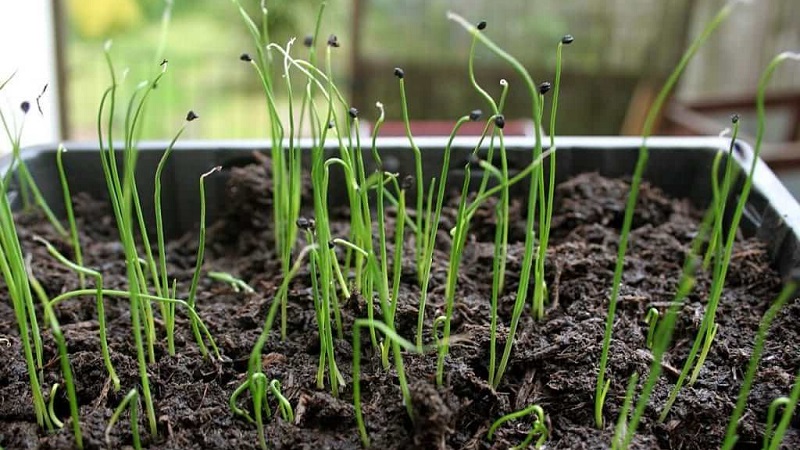
Seedlings 7-10 days old are thinned out, leaving a gap of 2-3 cm... The soil is kept in a constant moist state, but not overflowed. Once every 15 days, the plants are fed with complex fertilizer for seedlings. Perfectly stimulates the growth of a solution of chicken manure in a ratio of 1:10.
Advice! To prevent the onion from stretching and thinning, they provide supplementary lighting with phytolamps. Daylight hours are extended to 11-13 hours.
2 weeks before planting on the garden bed, the seedlings are taken out into the open air for hardening... First, they hold it for no more than 10-15 minutes, then gradually increase the time to a whole day.
Landing in the ground
After 2 months, the onions are ready for transplanting.... If you do this sooner or later, the plants will not take root well.
The garden bed is dug up with preliminary application of compost and complex mineral fertilizer. The surface is carefully loosened, grooves are made 3 cm deep and the distance between rows is 3-50 cm.
Landing technology:
- Seedlings are selected with a height of 13-16 cm, strong, well-developed with 3-4 true leaves.
- The seedlings are taken out in bunches and lowered into water to wash off the earth.
- The roots are cut 2 cm and the leaves are cut by 1/3.
- Plants are planted in pre-watered rows with an interval of 5-7 cm (depending on the size of the future turnip). Deepen into the ground by 2-3 cm.
- Landings are compacted so that no voids remain.
- Mulch with fine compost.
After 3 days, the first watering is carried out. Row spacings are loosened as needed.
Seedless growing method
Direct sowing in open ground begins after the snow has completely melted... The beds are made 80–90 cm wide and 13–15 cm high, dug up with the addition of organic matter and urea.
Growing stages:
- The seeds are pre-soaked for a day in warm water or a growth stimulant, dried to a loose state.
- Grooves are made similar to the seedling method and watered with warm water.
- Sow with a distance of 2-3 cm, cover with earth and slap on top.
- Mulch with a layer of compost 3-5 cm, cover with foil or lutrasil.
The first shoots make their way on the 10-12th day.
Further care
Weak plants are removed as they develop and used as a greenery to the table. Thinning is combined with weeding and shallow loosening.
Water once a week with water from a tank, 1 m2 7-10 l is enough... In dry hot weather, the frequency is increased up to 3 times. A month before harvesting, watering is reduced, and 2 weeks before it is completely excluded. This contributes to the ripening of the bulbs and the accumulation of dry matter.
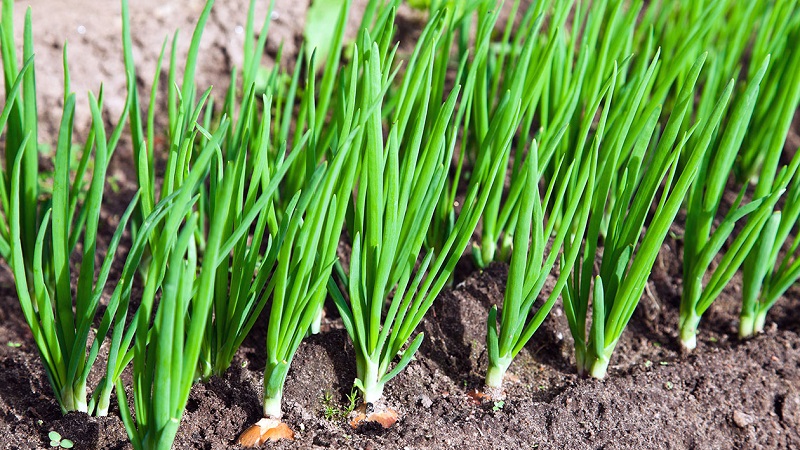
During the growing season, several dressings are carried out:
- for the first time, a solution of poultry manure or mullein is introduced in a ratio of 1:10, urea or nitrophosphate;
- in the middle of the season, complex fertilizer is used;
- at the end of summer, make nutritious watering with a phosphorus-potassium composition.
By the beginning of the ripening of the bulbs, nitrogen fertilization is excludedotherwise growth will slow down at the expense of quality.
Possible problems, diseases, pests
In prolonged damp weather and temperatures below + 12 ° С favorable conditions come for the development of diseases and pests. The most common are powdery mildew, neck and bottom rot, fusarium and stem nematode.
For prevention, follow the watering regime, thinned out plantings and destroy affected plants. The causative agents of diseases are suppressed with a 1% solution of Bordeaux liquid.
With extensive lesions, plants are sprayed "Fundazol", "Fitosporin" or "Gamair" according to the instructions.
Growing in a greenhouse
Optimal conditions for growing crops in greenhouses:
- uniform and sufficient lighting;
- the presence of vents for ventilation;
- well-established irrigation system;
- stable temperature up to + 15 ° С.
Harvesting and storage
Ripening is signaled by massive lodging and yellowing of feathers... As a rule, this time falls on the end of July-beginning of August.
On a dry warm day, the onions are pulled out by hand or dug out with a pitchfork.... Harvest for several days is laid out in one layer under a canopy to dry. Unripe specimens are kept in the sun for 2-3 weeks.
After that, the feathers are cut so that a tail of 3–5 cm remains. The heads are carefully sorted out, the sick and damaged are sorted out. Small ones are suitable for winter sowing.
Keep the harvest in boxes, cloth bags or braid... At home, the optimum temperature for onions is + 18 ° C in a dark place. In the basement, spicy varieties are stored at 0 ... 3 ° С, sweet and semi-acute ones - at 0- ... + 1 ° С.
Advantages and Disadvantages of Annual Growing
Main advantages:
- benefit - seeds are much cheaper and give a lot of planting material;
- the possibility of growing in northern regions with a short summer;
- annual harvest at the end of the season;
- no shooting occurs;
- simple preparation of seeds for sowing;
- saving space on the site.
disadvantages:
- growing is more labor intensive;
- with a seedless method, you have to fight a lot with weeds and thin out the seedlings;
- the number of suitable varieties and hybrids is limited.
Early and mid-late varieties are suitable for southern regions.... Onions are grown in any way, including podzimny and early spring sowing. In middle and northern latitudes, annual crops are obtained only by seedlings.
Growing leeks for the season
Leeks are grown seedlings or sowing in the ground... When choosing a variety, they are guided by climatic requirements, since the growing season of a crop is 150 days or more.
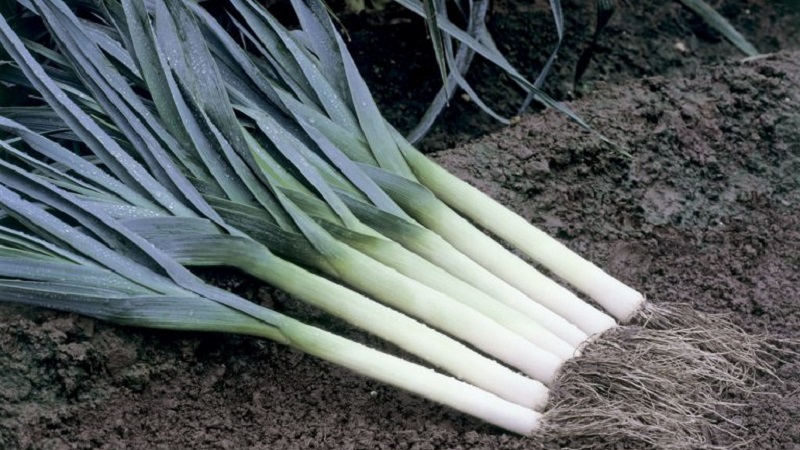
Direct sowing in the garden is used in the southern regions, where there is no danger of early frost. With the seedling method, seeds are planted from the end of February, but the seedlings dive into separate pots... Plants are taken care of, as well as for onions.
Leeks are planted in rows 15 cm deep with a distance of 20 cm from each other. When the stem is compacted, hilling is carried out. In total, 3-5 such manipulations are done per season, which contribute to the formation of the bulb on the stem.
The harvest is stored in the basement, in the wet sand.
Growing shallots
Shallots are similar in properties to onions, but differs in small bulbs and strong branching. Cultivate it mainly on greens.
To obtain products in one season, the seedling method is used... At the end of winter, seeds are planted in boxes with coarse soil.
Important! Be sure to feed seedlings with organo-mineral fertilizers.
When 3-4 leaves are formed, onions are planted in the beds... An interval of 12-15 cm is maintained between the plants, the rows are placed at intervals of 20 cm.
Harvest from the second half of July, when the leaves begin to dry out... The nests are divided into heads, the roots and stem are cut off, and dried. In a cellar or apartment, shallots are stored in mesh bags in a cool, dark place. A convenient way to use bulbs and herbs for a long time is to freeze them.
Conclusion
Growing onions in one season has a number of undeniable advantages. The method is profitable and popular in regions with short summers. The correct selection of varieties or hybrids and early sowing of seedlings is the basis for a future full harvest and storage duration.